How to Make a Cheese Plate
Cheese plates often look so elegant that it seems only a true professional can make one. But in fact, it’s much easier than you may think. By learning a few simple rules, you’ll be able to combine foods on a plate and amaze your guests.
Together with 5-Minute Crafts, you will learn to make your own cheese plates.
Kinds of cheese to use
Traditionally, a cheese plate contains an odd number of cheeses, usually from 3 to 5. The cheeses are organized in a circle: from softer ones with a creamy taste to firmer with brighter flavors.
To make an interesting plate, choose cheeses that are different flavors, and that are made from different kinds of milk. Combine tender, salty, and spicy cheeses, those that are made from cow’s, goat’s, and sheep’s milk, and also soft, semi-firm, and firm varieties.
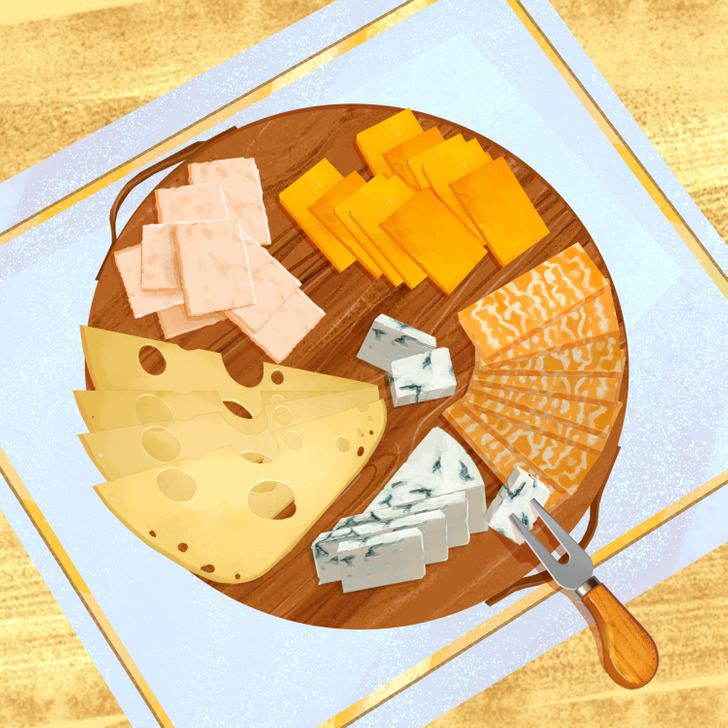
If you decide to use 5 kinds of cheese, you can try this plan:
- 1 familiar flavor (sharp white cheddar or Parmigiano Reggiano)
- 1 exciting flavor (tangy goat cheese or an off-the-wall flavor like ash-ripened cheese)
- 2 varieties of milk cheeses (usually cow’s and goat’s-milk cheeses)
- 1 aged cheese
You can also try a different combination:
- 1 creamy cheese (Brillat-Savarin)
- 1 blue cheese: Gorgonzola or Stilton
- 1 crumbly cheese: Chèvre (Goat cheese)
- 1 aged cheese (Cheddar or aged Gouda)
- 1 firm cheese (Parmigiano Reggiano or Gruyère)
Other foods to serve
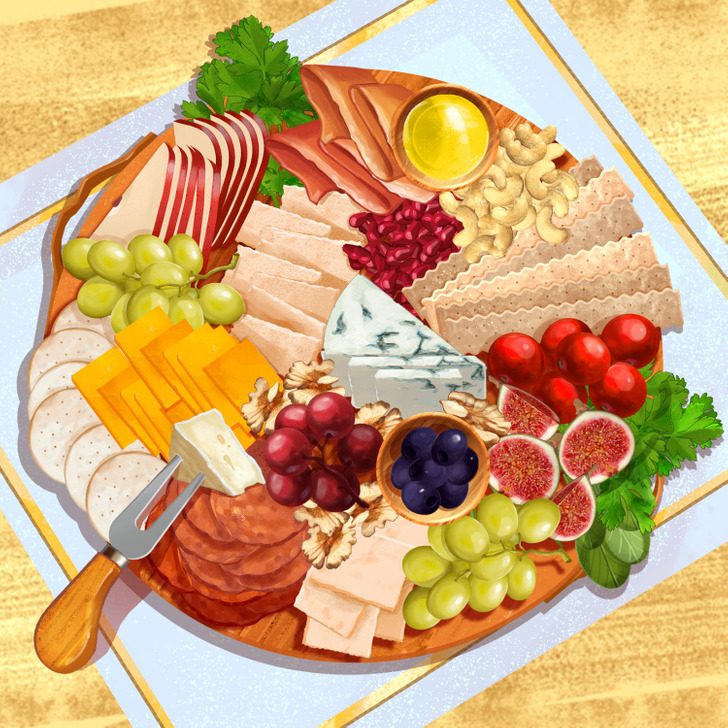
Even though your cheese plate may contain different kinds of cheese, the look will be more elegant if you add some other food. Use the foods as a contrast for the cheese or add something to them.
You can use this 6-step cheese plate:
- Cheese
Decide on the kinds of cheese you want to have on your plate. Combine different kinds. - Meat
Choose 2–4 meat appetizers with different tastes. Add chorizo, salami, prosciutto, or other kinds of meat. - Vegetables and fruits
Add 1–3 kinds of fruits, berries, and vegetables to the plate. You can use fresh berries, grapes, slices of apple and pear (sprinkle them with lemon juice to prevent them from going dark), fresh figs, peaches, and plums. You can use cherry tomatoes, marinated vegetables (carrots, cornichons, radishes, olives), and roasted peppers. Dried fruits are also good: figs, raisins, and others. - Something crunchy
Crackers, bread, or nuts. Choose 2–4 kinds of bread (toasted baguette slices, crackers, breadsticks) and 2 kinds of nuts (hazelnuts, almonds, pistachios, walnuts, pecans, and macadamias). - Sauces and toppings
Fill some bowls on a cheese plate with jam, honey, chutney, mustard, or other sauces. - Fresh herbs
To make the cheese plate look elegant and finished, add some herbs or edible flowers to decorate it.
How to organize a plate
- Take the cheese out of the fridge before serving
To discover the taste of every cheese, take it out of the fridge one hour before serving.
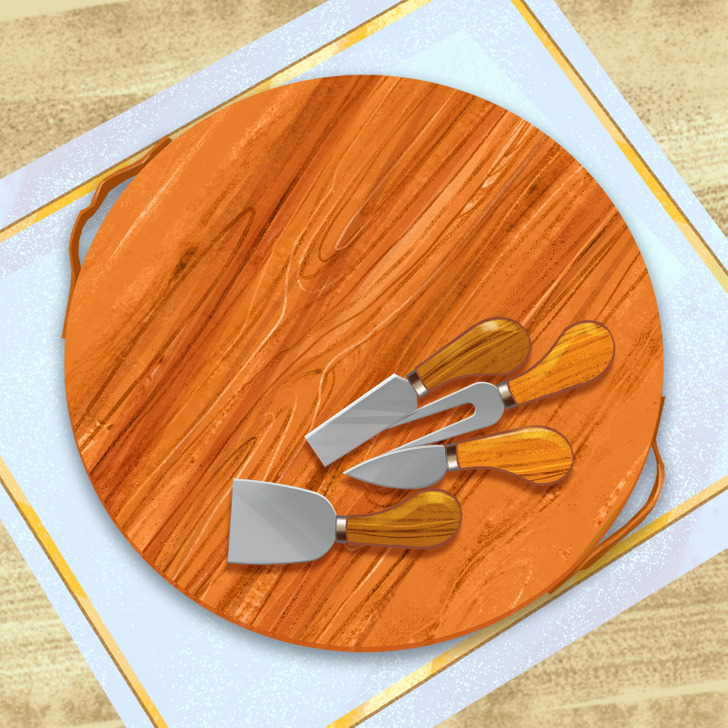
- Prepare a wooden or a slate board for serving cheese
It might be a board especially for cheeses or a simple cutting board. - Prepare a separate knife for each cheese
To prevent the flavors from mixing, prepare a knife for each kind of cheese. This is really important for soft cheeses that might be put on top of the bread.
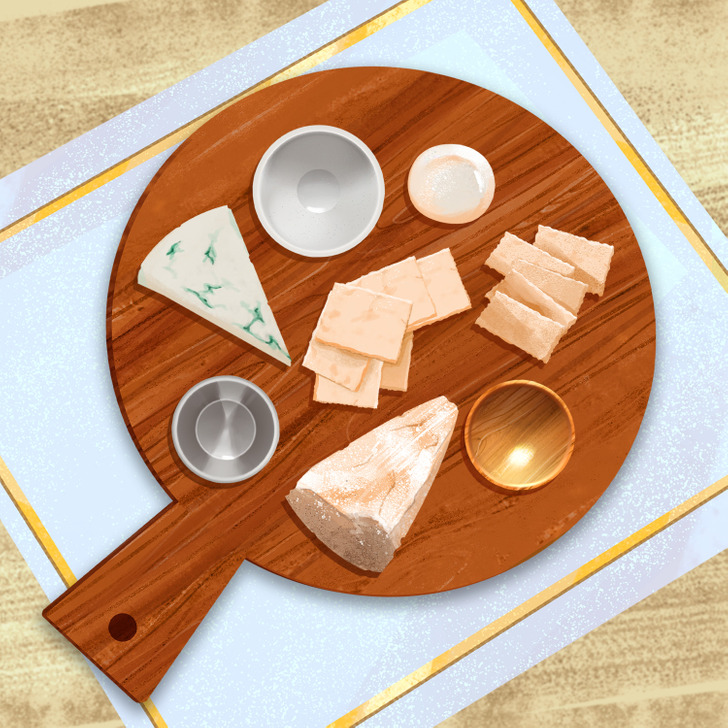
- Cut the cheeses before placing them on the board
Serve the cheeses by cutting them in different ways: slices, cubes, triangles, and so on. Don’t buy cheeses that are sold already cut. - Start with the biggest objects
Place the biggest things: the cheese and the bowls for sauces. You can place the smaller details later.
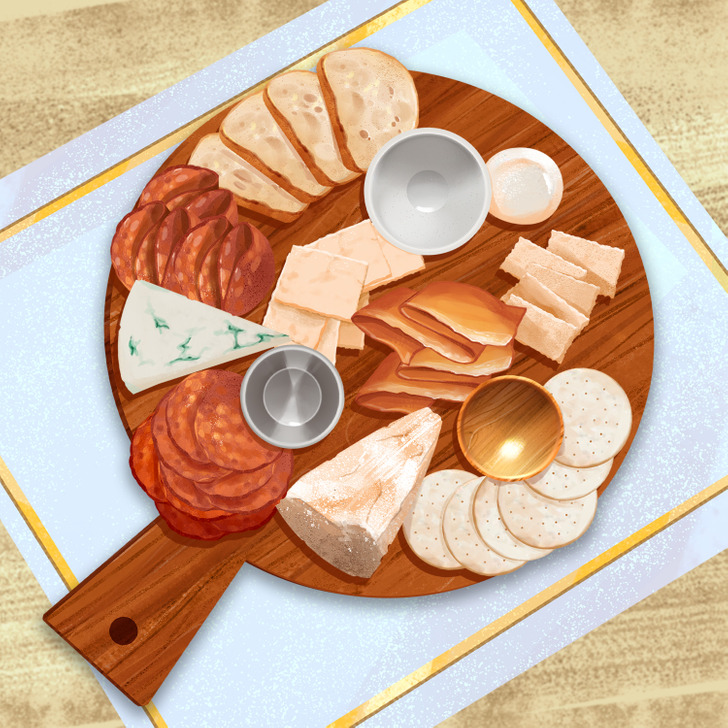
- Add meat, bread, and crackers
First, add meat delicacies. You can put them in a pile, in a cone, like a fan, or in a semi-circle. Use different shapes to make the plate more interesting. Add pieces of toasted bread and crackers. You can put them around the edges.
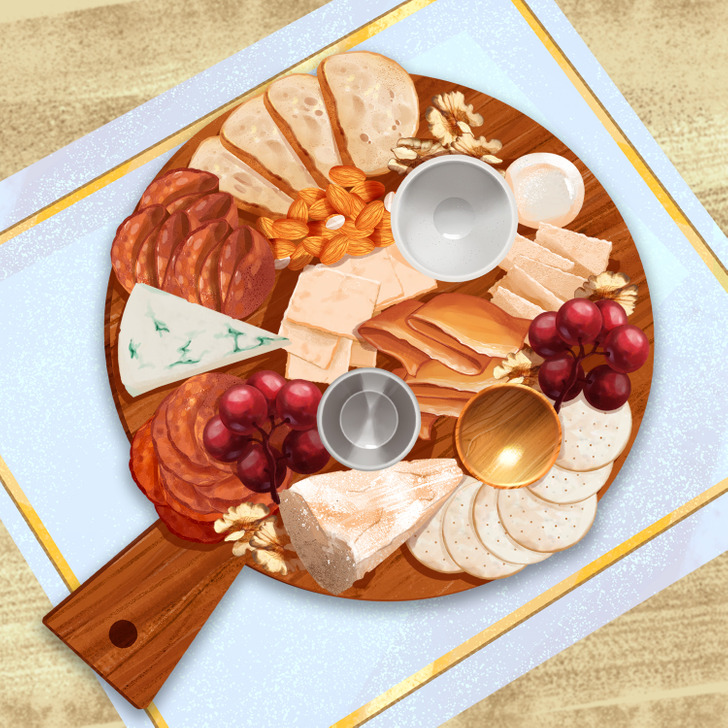
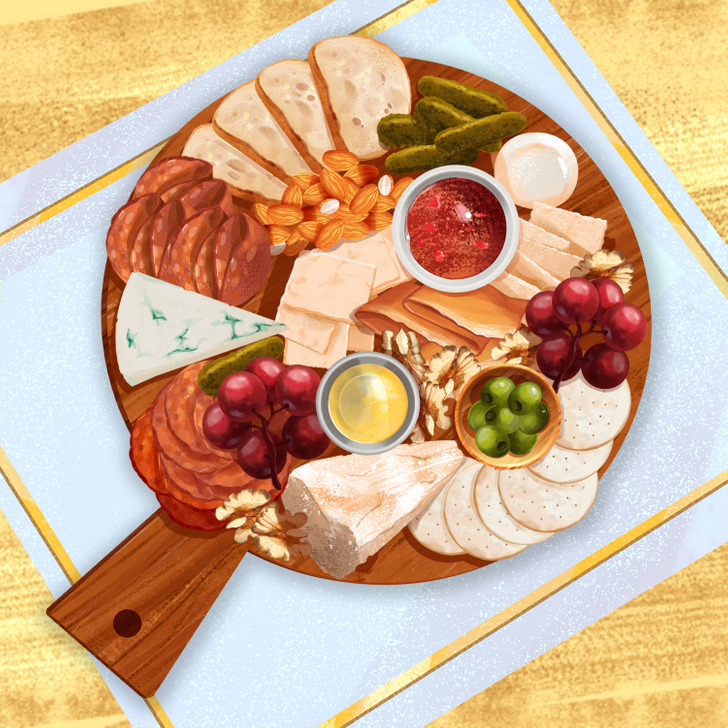
- Add toppings and salty treats
Fill the bowls with olives, cornichons, and liquid sauces. You can use flake-like sea salt, honey, jam, pesto, and other sauces.
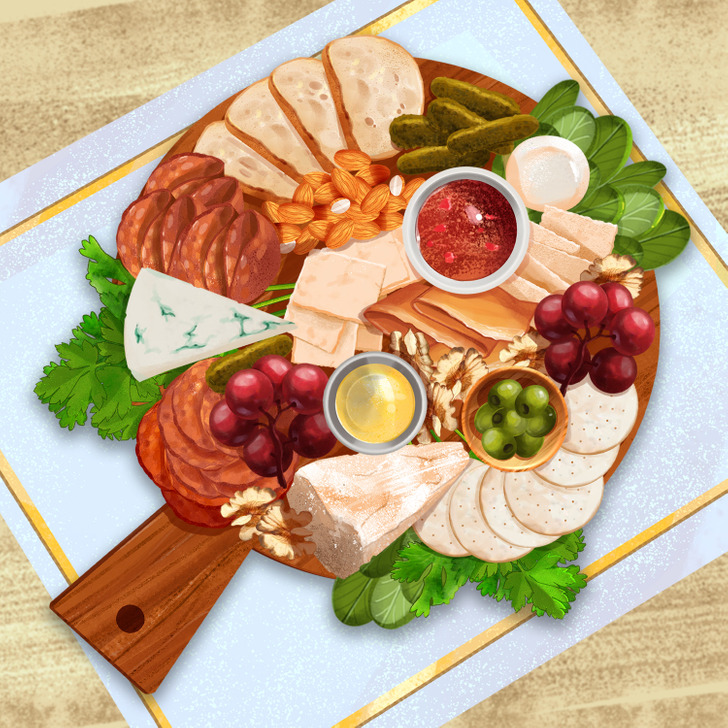
The right order to eating different kinds of cheese
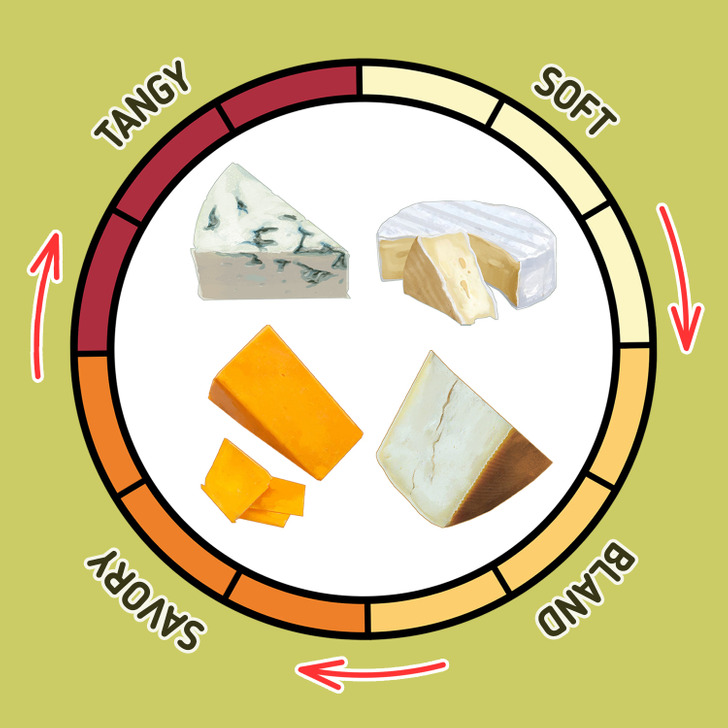
The rules of organizing a cheese plate require putting the varieties of cheese in a circle, in the order of an increase of their flavors. Trying them is better in the right order, going from the lighter ones to the more savory ones.
Start with the young cheeses, soft and bland, those with white crust. Then, move to the firm and semi-firm cheese, without a clear tangy flavor.
Then, go to the richer kinds. In the end, move to the tangiest kinds with the richest flavors, like blue cheeses.
Try each kind of cheese with the additions from the cheese plate. You will discover new sides of their flavors.